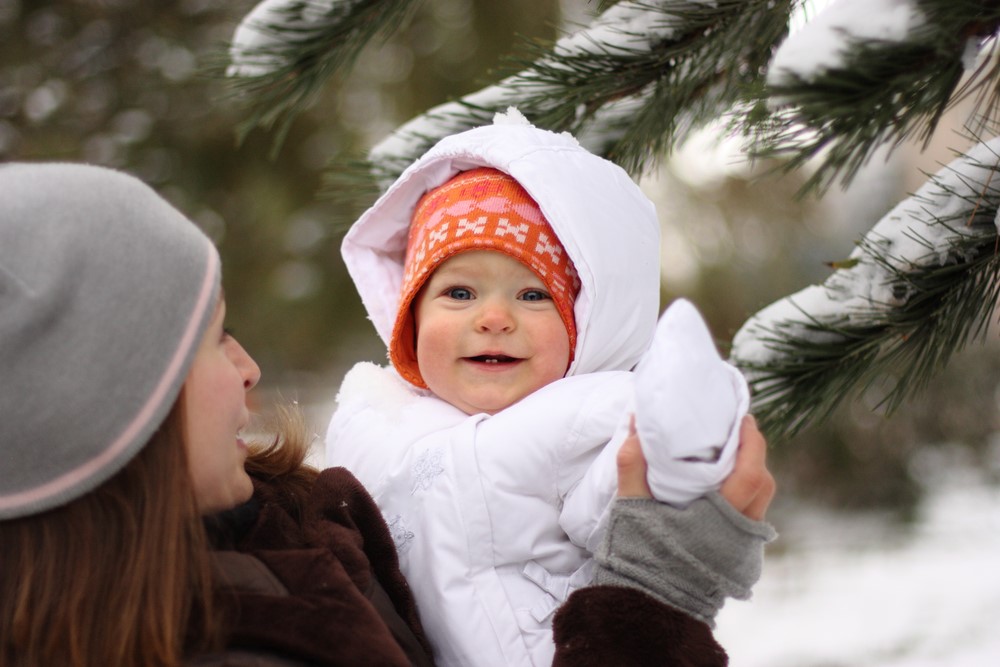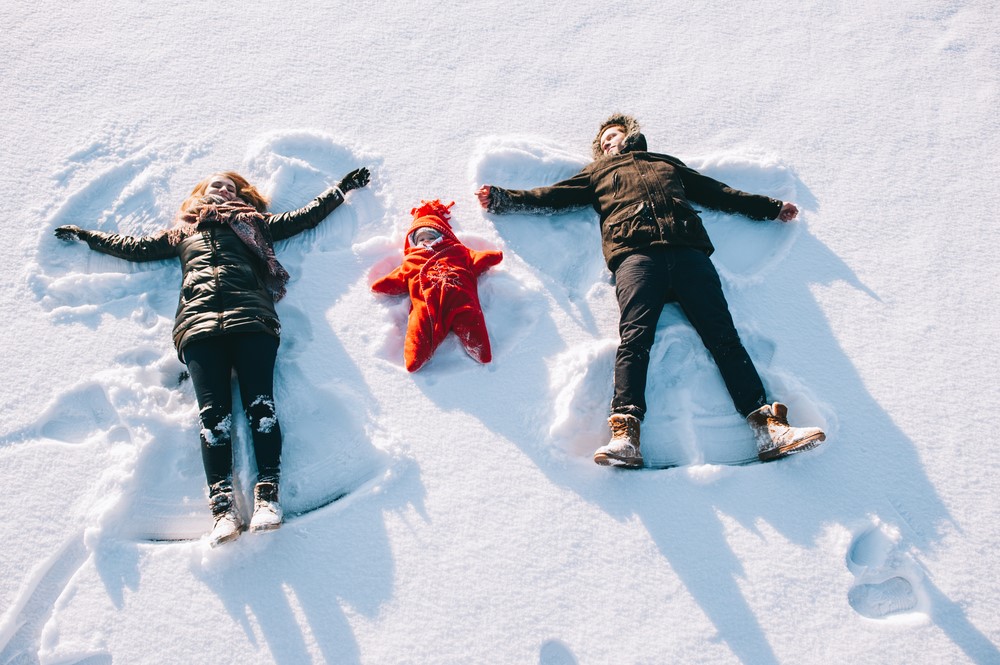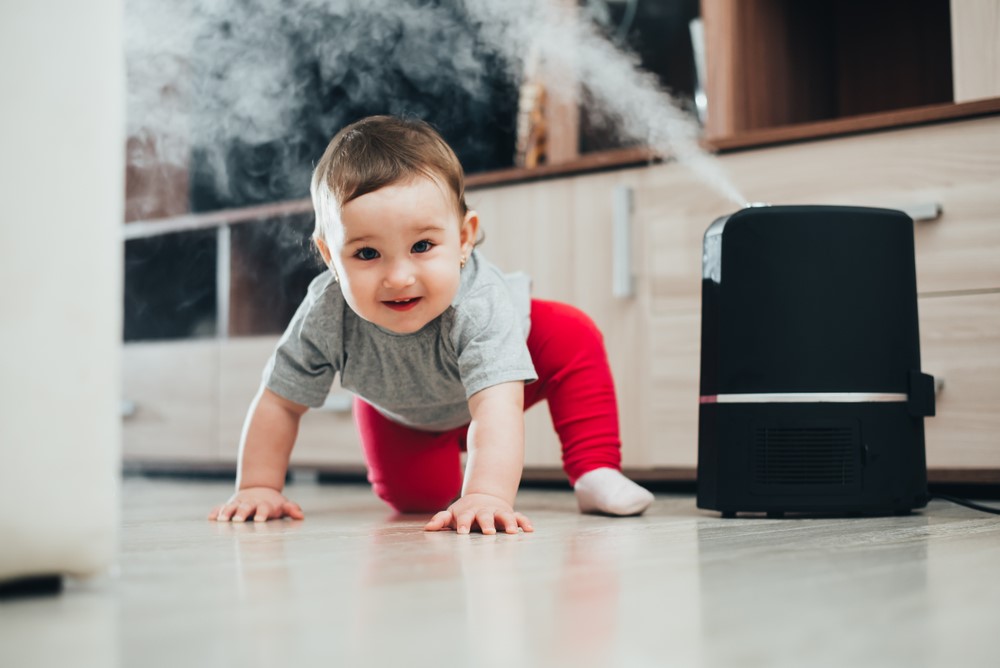There is plenty to love about being a wintertime mama. The winter season is peaceful and quiet, which means that you and your baby are more likely to get undisturbed sleep. Plus, the colder months provide the perfect excuse to dress your little one in adorable winter outfits that are guaranteed to put a smile on everyone’s face—because who doesn’t melt at the sight of a bundled up baby with rosy cheeks?
Of course, winter can also pose a few challenges for first-time parents. You probably have questions about how to dress your little one and keep them safe in frigid temperatures. To help you navigate baby’s first winter, we’ve put together a simple guide for keeping your little one warm, safe and happy when the mercury drops.
Bundle Baby Up for Cold Weather
You and your baby don’t need to stay inside all winter long. It’s generally safe to take your little one out in the cold, provided the temperature outside is reasonable and your baby is bundled up properly. But how do you dress your baby for winter? In a word: layers. First, make sure that you have several long sleeve Onesies® Brand Bodysuits on hand. These garments are perfect for indoor play during the colder months and serve as a great base layer for playing outside in cooler weather.
Before you head outside, add a pair of pants and a bunting or a coat to the baby’s long sleeve bodysuit. Don’t forget to top your baby’s outfit off with socks, a snug-fitting hat and a cozy pair of newborn mittens.
Limit Your Outdoor Time
Even when your baby is bundled up like an adorable marshmallow, you should still take regular breaks from the cold weather. Tiny babies can’t regulate their body temperature as well as adults can, which makes them more susceptible to the cold.
So, how long can your little one be outside in the cold? As a general rule of thumb, you should limit your outdoor time with the baby to no more than 20 or 30 minutes when the weather is below freezing. And don’t forget to factor in wind chill! The biting wind can make winter weather feel much colder, especially on a baby’s sensitive skin.
Keep in mind that the baby can get cold earlier than 20 minutes. Be on the watch for unusually low energy levels or pale skin, which could be a sign that your little one is too cold.
Dress Your Baby Properly for Car Rides
If you’re driving with your baby in the winter, be careful with winter coats and snowsuits. According to the American Academy of Pediatrics, bulky winter clothing should not be worn underneath the harness of a car seat because it can compromise the baby’s safety in the event of a car crash.
Instead, dress your baby in thin layers and bundle your little one up once you reach your destination. You can also invest in a car seat cover, but only if it doesn’t have a layer under the baby.
Another cold-weather driving tip for new parents: Keep the car seat in your home when it’s not being used. This way, it will be nice and warm for the baby.
Pick Up a Humidifier
Baby’s first cold is probably one of the saddest milestones for parents. (No one wants to see their little one uncomfortable and sick!). However, there is one useful item that can offer your baby some relief: a humidifier.
A humidifier works by putting moisture back into the air, which can help relieve your little one’s coughing and congestion. It can also be beneficial for babies struggling with dry skin and eczema.
One drawback to humidifiers is that they do need to be cleaned regularly (every three days, according to MayoClinic). Still, if you don’t mind adding it to your long list of chores, this is one wintertime essential that you definitely won’t regret buying.
Set Baby Up for Better Winter Sleep
What should my baby wear to sleep in winter? New parents often ask this question at some point. On frigid nights, it’s important to keep your baby warm (but not too warm) while they sleep. If you have a newborn, one of the easiest ways to do this is by using a thick swaddling blanket.
Once your baby outgrows their swaddling days, you can dress them in a warm blanket sleeper for winter. Fitted crib sheets in cozy flannel can provide some additional warmth and coziness.
However, make sure that there are no blankets in the baby’s crib. According to the American Academy of Pediatrics, blankets should not be used in the crib until the baby reaches their first birthday.
Get Traction on Slippery Ice
Although taking your baby for a quick stroll can be beneficial for both of you, keep in mind that the icy terrain can be dangerous. If you’re wearing your baby while walking outside, use traction devices such as YakTrax and MICROspikes on your feet to reduce the risk of falling.
If you’re planning to use a stroller for cold-weather walks, consider investing in a high-quality winter stroller. Winter strollers are designed to handle snow and slush so you can actually enjoy outdoor strolls with your baby without worrying about getting stuck in the snow.
When choosing a winter stroller, look for one that has bigger wheels (ideally, larger than eight inches) and marked as “all-terrain.” You’re sure to get plenty of use out of it, not only for this winter, but also for hiking and off-road strolls in the spring and summer.



